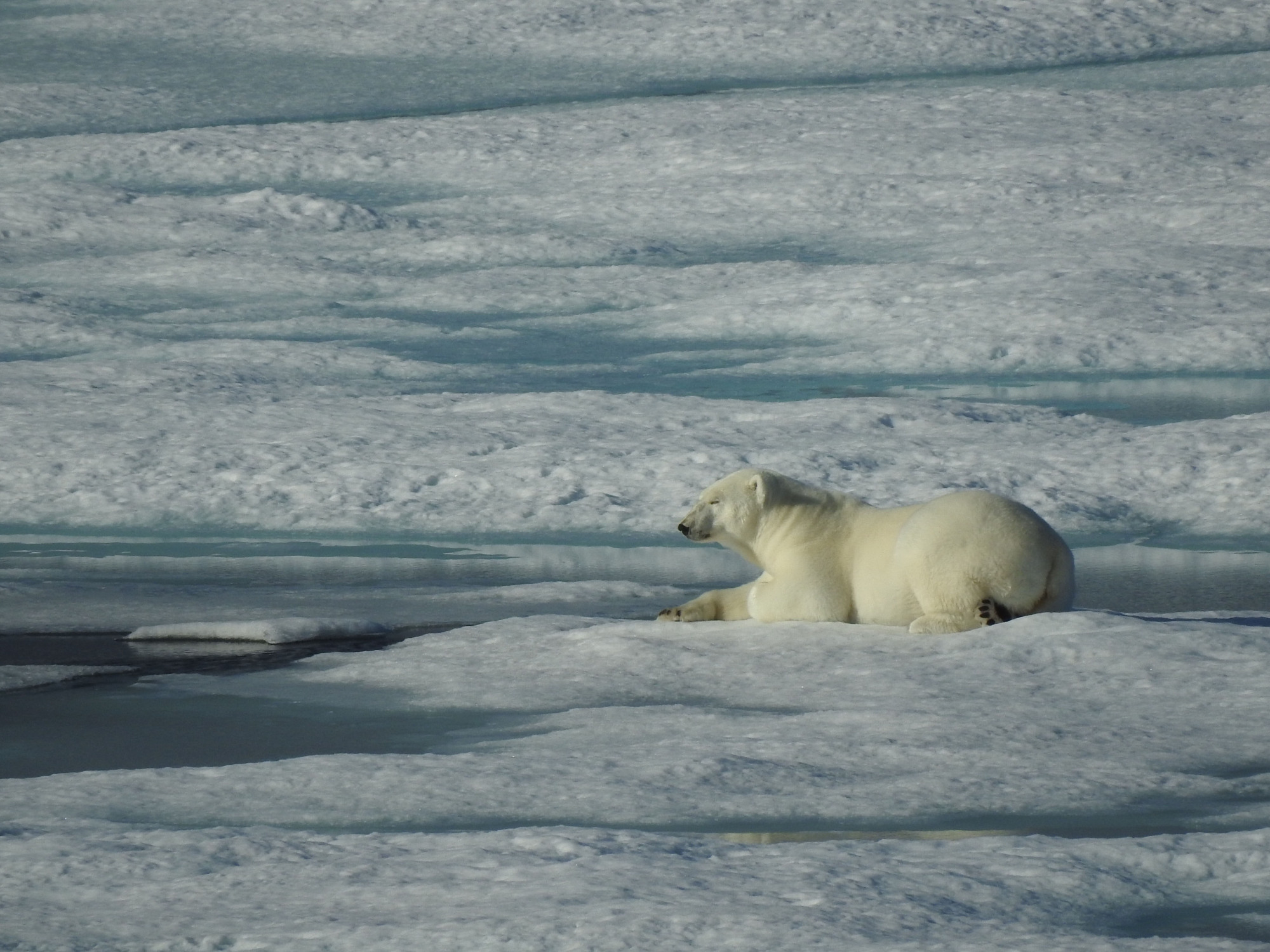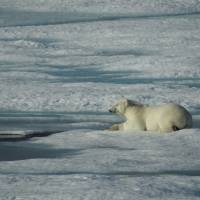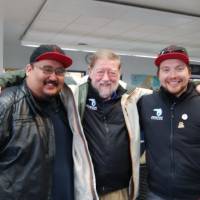We sailed from Greenland, across Baffin Bay, on Aug. 4, 2017. The sea was calm, and largely free of ice floes, although still dotted here and there with icebergs. The following day we reached the small community of Pond Inlet, more than 600 kilometers above the Arctic Circle in the north of Baffin Island.
Once again I was back in Canada's largest, most northern territory, Nunavut (Our Land in the indigenous Inuit language), with fond memories of my late friend Brian Beck, who spent several long seasons based in Pond Inlet studying narwhal, including in 1966 and '67 when I was off to the southeast researching seals in Cumberland Sound. In those days we both traveled around by dogsled or snowmobile, using freighter canoes (and in my case kayaks) in open water.
Ever since we swapped our tales after those trips, I've always wanted to go to Pond Inlet. Now, at last, I'd made it, albeit in very different circumstances.
Back in 1961-62, Brian and I had both been members of the Arctic Institute of North America's expedition to Devon Island, which is even closer to the Pole in the vast expanse of Nunavut — an area the size of Western Europe that's home to fewer than 40,000 people.
On that occasion, the expedition leader and four of us other overwintering members flew in by Cessna in April 1961 and set up our main base on the Truelove Lowlands on the northern coast. In those days the sea ice was so thick that the icebreaker bringing our winter supplies of fuel and food couldn't reach us so we had to make do with what we had, supplemented with Arctic char caught in a nearby lake and the bears we shot in self-defense.
In Sept. 1962, after closing down the base camp, we were airlifted by helicopter to an icebreaker, which took us around into Lancaster Sound and the small Inuit hamlet of Resolute on the south shore of Devon Island, where there was a Canadian airforce base.
Amazingly, this summer I again found myself in Lancaster Sound, the entrance of the legendary Northwest Passage linking the Atlantic and Pacific oceans. Many have perished attempting to find a route through the ice this way to the fabled riches of the Orient.
Now, at the age of 77, I was sailing aboard the Ocean Endeavor cruise ship on charter to the tour operators Adventure Canada, and we were ferried to the land and back by sturdy inflatable Zodiac inflatable boats. It was very different from before!
Spanning 55,247 square kilometers, Devon Island is widely known as the world's largest uninhabited island, although Paleolithic peoples from Asia made it their home for at least 4,500 years, hunting caribou, muskox, hares, ducks, geese and other birds on land, and bowhead whales, walrus, belugas, narwhals, seals and polar bears at sea or from the ice.
Our tour stopped for a visit to the abandoned Royal Canadian Mounted Police outpost at Dundas Harbour, as well as the site of ancient stone, whalebone and sod houses that were occupied by hunters until about 500 years ago.
We also visited Beechey Island, which is separated from the southwestern corner of Devon Island by Barrow Strait. It's where the renowned English explorer Sir John Franklin overwintered in 1845-46 while searching for the Northwest Passage. He left the graves of three men there before he, his ships HMS Erebus and HMS Terror, and the other 126 aboard all vanished. The sunken wreck of HMS Erebus wasn't discovered until 2014; that of HMS Terror in 2016.
As we sailed westward from there, my mood was somber until we drew closer to Cornwallis Island and Resolute, an Inuit hamlet of fewer than 200 souls where we were all gladdened by the sight of a big, fat, probably pregnant polar bear lounging around on a large ice floe.
On Aug. 10, we disembarked there in a biting breeze, choppy seas and with the air temperature just above freezing. We gathered in the dismal airport terminal, where even the coffee shop was closed, and waited for our fog-delayed charter flight. All was not lost, though, because Anguti Johnson and Josh Quamariaq, two of our Inuit shipmates, broke out a guitar and a drum and led us all in an impromptu, rollicking concert of song and dance.
A week later, the governments of Canada and Nunavut, along with the Qikiqtani Inuit Association, jointly designated the whole of Lancaster Sound, as well as already protected areas in the region, as a national marine conservation area covering 340,000 square kilometers — almost the size of Germany — in which drilling for gas and oil is forbidden.
We had been traveling through history.





















With your current subscription plan you can comment on stories. However, before writing your first comment, please create a display name in the Profile section of your subscriber account page.